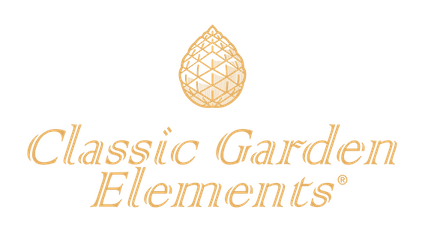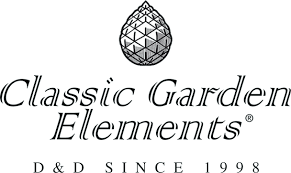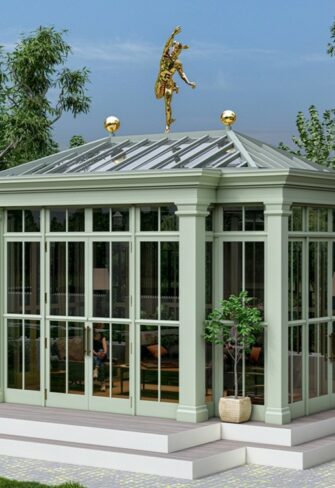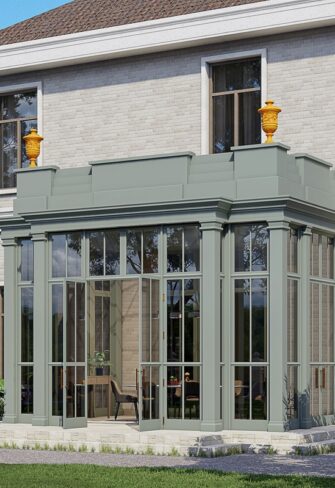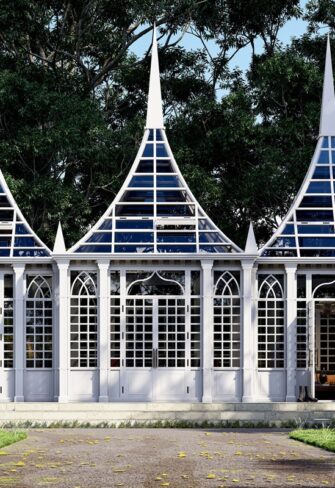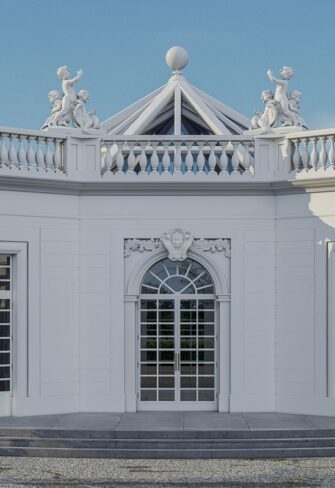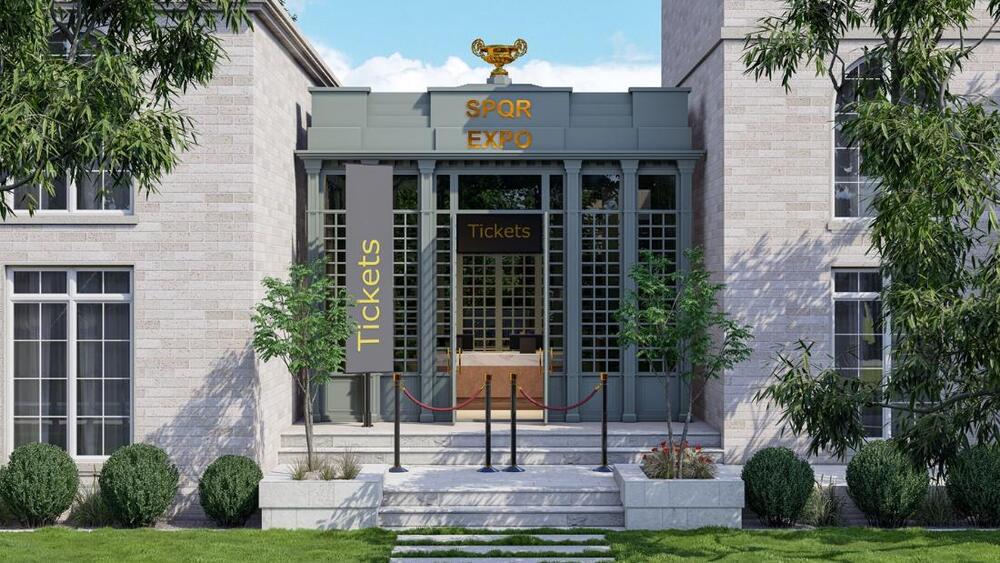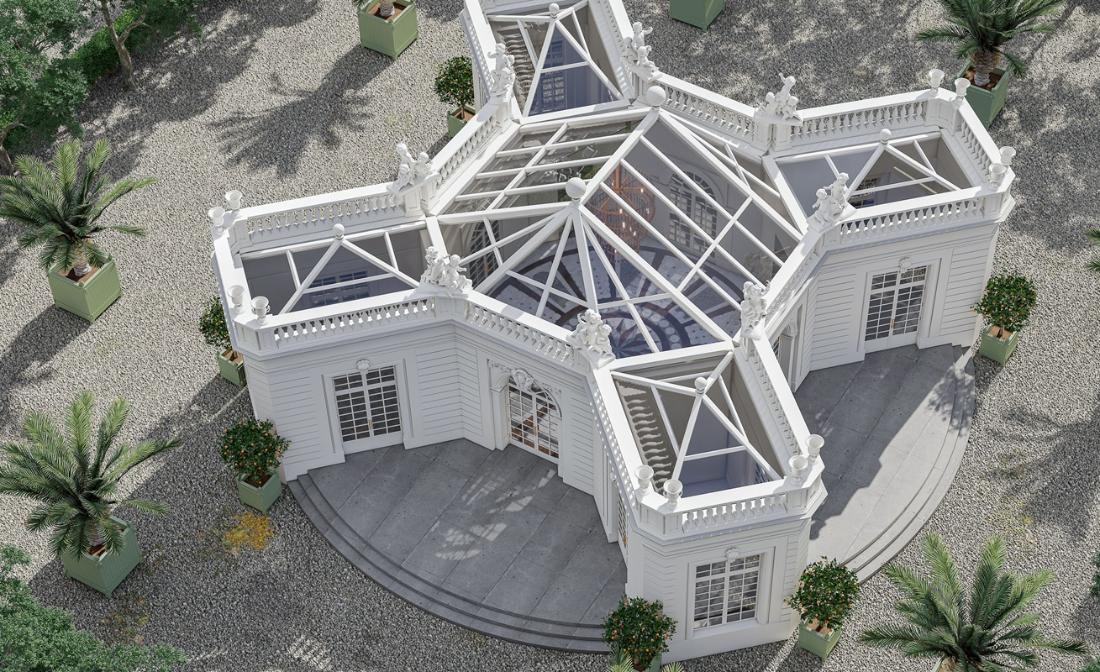Conservatory
Showing all 7 results
-
Gaineswood Conservatory in Steel
£43,500.00 -
Bloomingdale Conservatory in Steel
£69,000.00 -
Happy George Beach House
£45,500.00 -
Spring Hill Conservatory
£90,000.00 -
Newbury Triple Conservatory
-
Expo House Conservatory
£68,900.00 -
Pavillon Français
CONSERVATORIES
Conservatories are architectural extensions of buildings or stand-alone structures with glass roofs and walls. A well-designed conservatory harnesses the greenhouse effect to maintain a comfortable interior temperature without conventional heating, making it ideal for overwintering suitable plants. By passively utilising solar energy, even minimal sunlight or diffused light can noticeably warm the interior compared to the outside air. To maximise this effect, the glass façade should ideally face south or west.
The History of Conservatories: 16th to 18th Century
Modern conservatories trace their origins to the grand orangeries, palm houses, and English conservatories of the 18th century. In England, numerous private conservatories were built as extensions to aristocratic estates and the homes of the wealthy. However, the concept dates back further to the 17th century, when glass structures or brick buildings with large glass panels were first used to cultivate plants and fruits brought from colonial territories.
The 19th Century: The Golden Age of Conservatories
The Victorian era marked the stylistic heyday of the conservatory. Orangeries and palm houses became increasingly popular, with their iconic glass and steel constructions adorned in the ornate style of the time. These structures quickly spread across the European continent, becoming architectural landmarks. Today, they remain enchanting, romantic testaments to an era that significantly influenced architectural design.
From this period onwards, conservatories evolved into unique living spaces, where people could enjoy the beauty of nature while remaining sheltered from the elements. These glass houses, once purely for plant cultivation, were soon furnished with tables, chairs, and benches—creating an entirely new way of experiencing indoor-outdoor living. A notable early example in Germany was the Breiter conservatory in Leipzig, built in the first third of the 19th century.
By the 1880s, conservatories had become popular additions to middle-class homes and holiday lodges in Germany. Until the 1930s, they were often built in classical architectural styles and enjoyed widespread popularity.
The HOFHEIM Collection draws inspiration from this golden age, reflecting the elegance of the Belle Époque—a period defined by exquisite conservatories, palm houses, and orangeries.
The 20th Century: Decline and Rediscovery
Sadly, the conservatories of today often reflect the architectural trends of the 1960s and 1970s rather than the grandeur of the 19th century’s steel-and-glass masterpieces. Following the oil crises of 1973 and 1979/80, alongside growing environmental awareness, glass was rediscovered as a sustainable building material. Unfortunately, the mid-20th century was not known for its architectural finesse, and this aesthetic shortfall remains evident in many modern conservatories—particularly those built as uninspired house extensions.
During this period, the concept of the “living conservatory” emerged, extending the habitable space of a home. Typically designed in a utilitarian style, these structures often featured low-cost materials such as PVC and were frequently little more than rectangular glass boxes—functional, but devoid of design flair.
HOFHEIM Collection Conservatories: Quality & Distinctive Design
Such a lacklustre approach does little justice to the historical and architectural significance of conservatories—structures that elegantly bridge house and garden. The HOFHEIM Collection takes a deliberately different path.
Our conservatories pay homage to the rich heritage of palm houses, orangeries, and traditional English conservatories, while incorporating modern materials. Explore our SPRING HILL, BREMO, or EXPO HOUSE models for exemplary craftsmanship and design.
Whether inspired by classic Georgian elegance, the Bauhaus movement of the 1920s and 1930s, or Victorian opulence, HOFHEIM Collection conservatories expertly reinterpret historical styles. These creations are not merely glass rooms—they are striking, exuberant architectural statements, reminiscent of the whimsical “follies” found in historic gardens. From the GAINESWOOD conservatory to the PAVILLON FRANÇAIS and the NEWBURY PORT pool house, we deliver on our promise of extraordinary design.
Why not elevate your garden or park with a conservatory from the HOFHEIM Collection?
HOFHEIM Collection Conservatories: Steel & Glass
Our conservatories are constructed from galvanised and powder-coated steel—a material choice firmly rooted in the tradition of 19th-century palm houses. Unlike wood, which tends to rot in the humid environment of a conservatory and requires regular chemical treatments, steel is both durable and low-maintenance. Even in coastal locations, galvanised steel resists rust, lasting for generations while enabling bold, expansive designs.
Aluminium, though sometimes used in modern conservatories, has its drawbacks. It is prone to corrosion in salty air, lacks the load-bearing capacity for larger structures, and expands and contracts with temperature fluctuations—leading to cracks in window seals and misaligned doors and windows. This issue is particularly problematic with electrically operated roof windows.
For these reasons, the HOFHEIM Collection remains committed to galvanised, powder-coated steel as the ideal material for conservatory construction.
Unlike historical orangeries and palm houses, which typically featured single glazing, our conservatories are available with double or triple glazing for enhanced insulation and energy efficiency. Of course, more traditional greenhouses can still be ordered with single glazing if preferred.
Order Your HOFHEIM Collection Conservatory Today!
Bring timeless elegance and architectural flair to your garden or park with a conservatory from the HOFHEIM Collection—where heritage meets contemporary craftsmanship.
